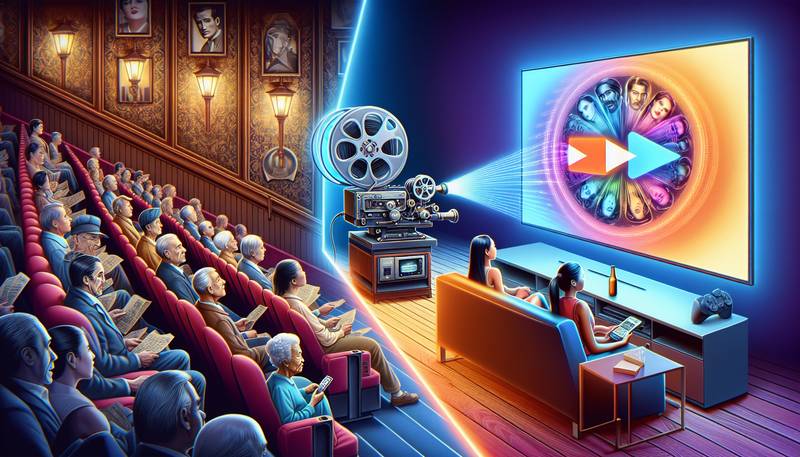The Changing Landscape of TV and Film in the Digital Age

The media industry is always in flux, but the past decade has seen a seismic shift in the landscape of television and film. The rise of digital technology has transformed the way we consume, produce, and distribute content, and the implications of this change are vast and far-reaching. In this article, we'll take a deep dive into the changing landscape of TV and film in the digital age, exploring the impact of streaming services, the rise of user-generated content, and the future of the industry.
The Rise of Streaming Services
Streaming services like Netflix, Hulu, and Amazon Prime have fundamentally altered the way we watch TV and movies. Rather than being tied to a cable box or a DVD player, viewers can now access a massive library of content from anywhere with an internet connection. This convenience has been a major driver of the streaming revolution, and it's had a significant impact on traditional media companies.
Streaming services have also changed the way content is produced and distributed. With a global audience at their fingertips, these platforms are able to invest in high-quality original programming that can compete with traditional TV networks and movie studios. This has led to a golden age of television, with critically acclaimed shows like "Stranger Things," "The Crown," and "The Handmaid's Tale" all being produced by streaming services.
The Impact of User-Generated Content
The rise of digital technology has also democratized the creation of content. With platforms like YouTube, TikTok, and Instagram, anyone with a smartphone can become a content creator. This has led to an explosion of user-generated content, much of which is every bit as engaging and entertaining as professionally produced TV and movies.
User-generated content has also opened up new opportunities for creative expression. Creators from diverse backgrounds and with unique perspectives can now share their stories with a global audience. This has led to a more inclusive and representative media landscape, with content that reflects the diversity of the world we live in.
The Future of the Industry
The changing landscape of TV and film in the digital age has raised a lot of questions about the future of the industry. Will streaming services continue to dominate, or will traditional media companies be able to adapt and compete? Will user-generated content continue to rise in popularity, or will it be a passing fad?
One thing is certain: the media industry will continue to evolve. As technology advances and viewing habits change, content creators and distributors will need to be agile and innovative to succeed. The future is uncertain, but one thing is clear: the digital age has opened up a world of possibilities for TV and film, and the best is yet to come.
Conclusion
The digital age has brought about a revolution in the way we consume, produce, and distribute TV and film. Streaming services have changed the game, providing viewers with unprecedented access to a vast library of content. User-generated content has democratized the creation of media, giving a voice to creators from all walks of life. And as the industry continues to evolve, we can expect to see even more changes in the years to come. The landscape of TV and film is changing, and the digital age is leading the way.


